
Through this fun bowling activity, children hone counting and gross motor skills. They also explore how to respond if they spill something.
- Subject:
- Mathematics
- Material Type:
- Lesson Plan
- Provider:
- PBS LearningMedia
- Date Added:
- 11/06/2023

Through this fun bowling activity, children hone counting and gross motor skills. They also explore how to respond if they spill something.

Teach your children some cooperative games to play with friends, in this activity from Arthur.

Try these cooperative games to explore the benefits of teamwork with students.

This is a lesson to help enforce the ideas of teamwork and deductive reasoning in school and in the workplace. Students will work together to figure out what a picture that has been cut into peices is without having all the peices. Students will use teamwork and deductive reasoning to try to figure it out.

Come along, as this dance sequence takes learners out on the high seas, on a pirate ship! Along with their shipmates, students will see the importance of teamwork, sharing, and building social awareness and relationship skills. From swabbing the deck together to giving a fellow student a hearty hello, this video encourages students to find simple ways to collaborate and strengthen their team. Included are resource materials for teachers and student activity. [3:27]

Miss Elaina, Daniel Tiger, and O the Owl put on a little show for Miss Elaina's parents, in which some of them dance backward while O plays the drums. This fun performance has everyone working together in his or her own way. Included is a link to a supplemental activity. [1:02]

Daniel and his friends work together to find, retrieve, and deliver the Special Golden Pear. Remind kids that they can always lend a helping hand, even if they are small. Included is a link to a supplemental activity. [1:31]
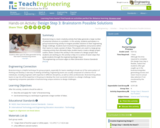
Brainstorming is a team creativity activity that helps generate a large number of potential solutions to a problem. In this activity, students participate in a group brainstorming activity to generate possible solutions to their engineering design challenge. Students learn brainstorming guidelines and practice within their teams to create a poster of ideas. The posters are used in a large group critiquing activity that ultimately helps student teams create a design project outline. (Note: Conduct this activity in the context of a design project that students are working on; this activity is Step 3 in a series of six that guide students through the engineering design loop.)

Buddy, Tiny, Shiny and Don make a new nest on the beach. They decide to form a Nature Trackers Club out of the nest because of their shared love of nature and adventure. [2:10]

In this video, children learn about teamwork and trust as they work together to complete physically and mentally tough challenges while on a ropes course. [3:02]

A favorite movie, “E.T. the Extra-Terrestrial,” provides the backdrop scenario for students to discover how harnessing the sun’s energy provides unlimited power for many purposes, including the operation of thousands of satellites in orbit today and communication over long distances. In the movie, E.T., an alien life form, is stranded on Earth and befriends Elliott, the little boy who rescues him. As E.T. becomes gravely ill, Elliott realizes that E.T. needs to return home in order to survive. To arrange for transport, E.T. must “phone home.” Teams engage in an interactive quest to answer the question: E.T. phone home—fact or fiction? They must discover four clues in order to unlock four padlocks on a box that contains the answer. This requires them to watch a one-minute online video, complete a crossword puzzle, scan three QR codes for articles to read, and put together a cut-apart puzzle with an invisible ink clue. They watch short online movie excerpt videos to kick off and wrap up the activity.
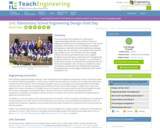
This unit provides the framework for conducting an “engineering design field day” that combines 6 hands-on engineering activities into a culminating school (or multi-school) competition. The activities are a mix of design and problem-solving projects inspired by real-world engineering challenges: kite making, sail cars, tall towers, strong towers and a ball and tools obstacle course. The assortment of events engage children who have varied interests and cover a range of disciplines such as aerospace, mechanical and civil engineering. An optional math test—for each of grades 1-6—is provided as an alternative activity to incorporate into the field day event. Of course, the 6 activities in this unit also are suitable to conduct as standalone activities that are unaffiliated with a big event.

Student teams are challenged to navigate a table tennis ball through a timed obstacle course using only the provided unconventional “tools.” Teams act as engineers by working through the steps of the engineering design process to complete the overall task with each group member responsible to accomplish one of the obstacle course challenges. Inspired by the engineers who helped the Apollo 13 astronauts through critical problems in space, students must be innovative with the provided supplies to use them as tools to move the ball through the obstacles as swiftly as possible. Groups are encouraged to communicate with each other to share vital information. The course and tool choices are easily customizable for varied age groups and/or difficulty levels. Pre/post assessment handouts, competition rules and judging rubric are provided.
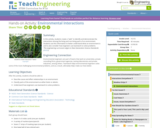
In this activity, students create a "web" to identify and demonstrate the interactions among the living and non-living parts of an environment. This information allows students to better understand what an environment is and to also consider how engineers use teamwork to solve problems.

Students review information learned during the past five lessons and activities of the Introduction to Engineering unit. Working in teams, they create flyers and short quizzes about various types of engineering to share with the class and collect into a "Olympic Engineering Binder" for the class to keep.
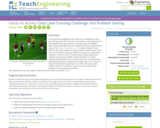
Student teams follow the steps of the engineering design process to meet the challenge of getting their entire class from one location on the playground to the sidewalk without touching the ground between. The class develops a well thought-out plan while following the steps of the engineering design process. Then, they test their solution by going outside and trying it out. Through the post-activity assessment, they compare their problem-solving experience to real life engineering challenges, such as creating new forms of transportation or new product invention.
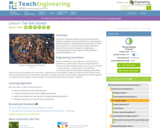
This lesson will introduce students to environmental issues. Students will recognize environmental opinions and perspective, which will help them define themselves and others as either preservationists or conservationists. Students also learn about the importance of teamwork in engineering.

Soccer is the most popular game in the world. Join Penny and the KidVision kids and learn how to play. We meet a coach, a team, do warm-ups, and play a game! You'll be World Cup ready! Included are links to age-appropriate lesson plans and assessments. [8:33]
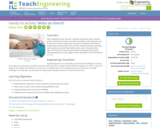
After reading the story "Dear Mr. Henshaw" by Beverly Cleary, student groups create alarm systems to protect something in the classroom, just as the main character Leigh does to protect his lunchbox from thieves. Students learn about alarms and use their creativity to devise multi-step alarm systems to protect their lockers, desk, pets or classroom door. Note: This activity can also be done without reading the Cleary book.

Students design, build and test model race cars made from simple materials (lifesaver-shaped candies, plastic drinking straws, Popsicle sticks, index cards, tape) as a way to explore independent, dependent and control variables. They measure the changes in distance travelled with the addition of mass to the vehicles. Students also practice the steps of the engineering design process by brainstorming, planning, building, testing, and improving their "mint-mobiles."